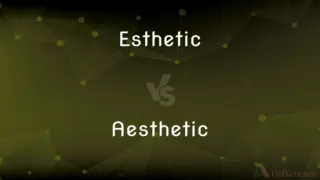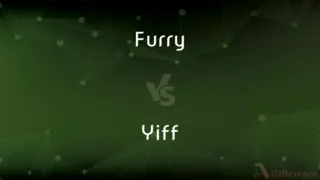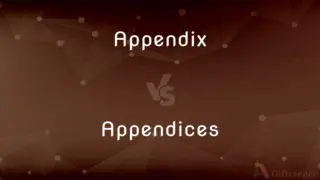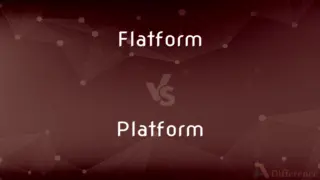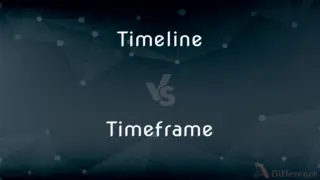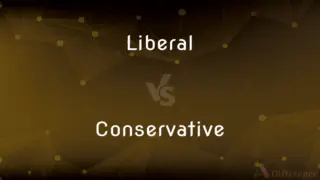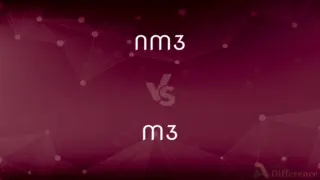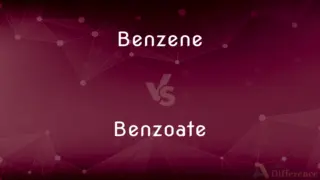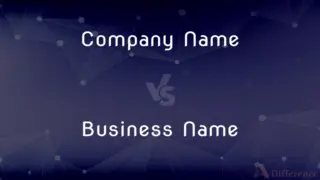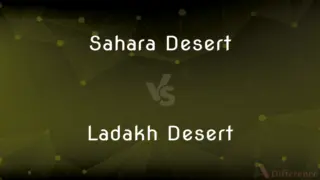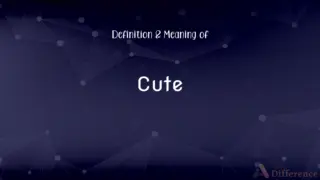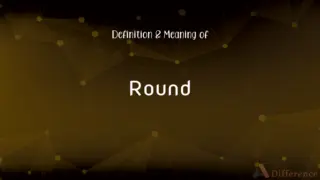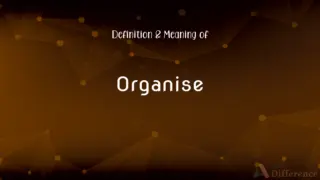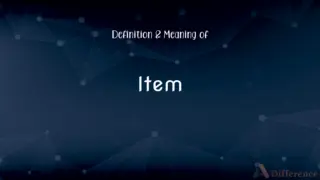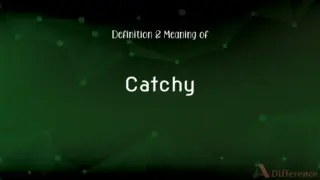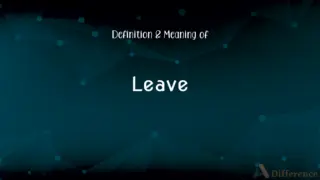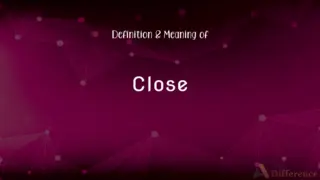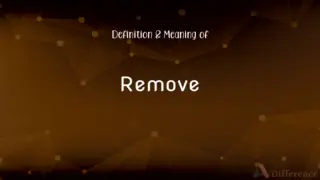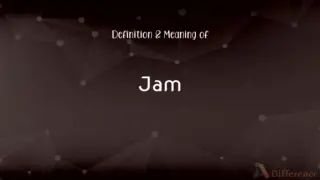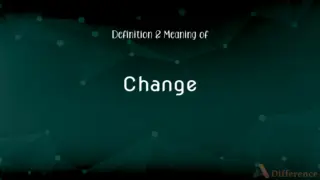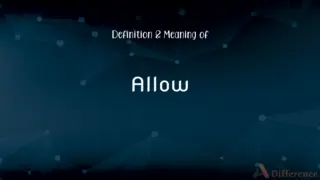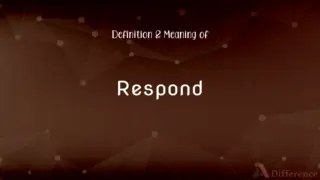Elephant vs. Mastodon — What's the Difference?
By Tayyaba Rehman — Published on September 10, 2023
Elephants are large mammals from the family Elephantidae, while mastodons, now extinct, belonged to the family Mammutidae.
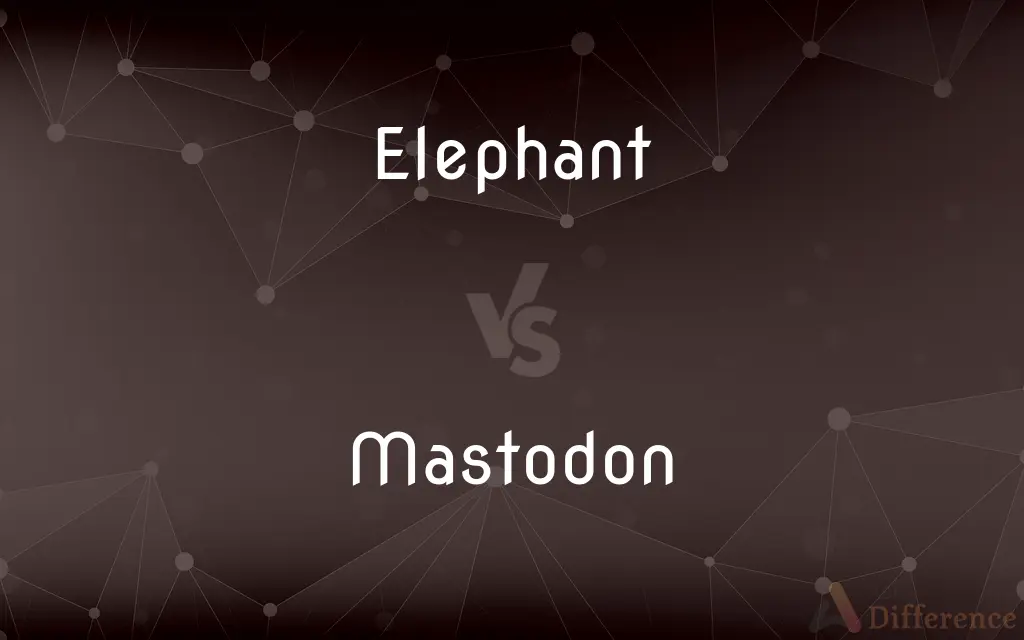
Difference Between Elephant and Mastodon
Table of Contents
ADVERTISEMENT
Key Differences
An Elephant is a familiar sight for many. Known for their large ears, long trunks, and massive size, they are currently roaming parts of Africa and Asia. Mastodons, on the other hand, are ancient creatures, having roamed parts of North and Central America before going extinct around 10,000 years ago.
Delving into their physical differences, the Elephant possesses a more arched skull with high-set eyes. Their molars, crucial for identification, are ridged and laminated. The Mastodon, by contrast, had a flatter skull with large, conical-shaped teeth suited for forest browsing.
Considering habitat and behavior, Elephants today can be found in various environments, from savannahs to forests, and display intricate social behaviors and memory abilities. Mastodons, though not as well-documented, seemed to prefer spruce parklands and had teeth suggesting a diet of shrubs and trees.
From an evolutionary perspective, Elephants belong to the Elephantidae family and share a more recent common ancestor with woolly mammoths. The Mastodon, however, is from the Mammutidae family, indicating a different evolutionary branch.
Lastly, while Elephants continue to grace our planet, facing challenges from poaching and habitat loss, Mastodons left their legacy through fossils, giving us a glimpse of prehistoric America.
ADVERTISEMENT
Comparison Chart
Taxonomic Family
Elephantidae
Mammutidae
Current Status
Still existing
Extinct (around 10,000 years ago)
Skull Shape
Arched with high-set eyes
Flatter
Teeth
Ridged and laminated molars
Large, conical-shaped teeth
Historical Habitat
Africa and Asia
North and Central America
Compare with Definitions
Elephant
A large herbivorous mammal with a trunk.
The elephant lifted water with its trunk.
Mastodon
An extinct, large herbivorous mammal.
The mastodon roamed North America thousands of years ago.
Elephant
A creature belonging to the Elephantidae family.
The African elephant is different from its Asian counterpart.
Mastodon
A prehistoric creature from the Mammutidae family.
Fossils of the mastodon provide insights into prehistoric ecosystems.
Elephant
A key figure in folklore and religion.
In Hinduism, the deity Ganesha is depicted with an elephant head.
Mastodon
Noted for its conical-shaped teeth.
The teeth of the mastodon suggest a diet of shrubs.
Elephant
The largest land animal existing today.
The weight of an elephant can reach up to 14,000 pounds.
Mastodon
Roamed during the Pleistocene epoch.
During the ice age, the mastodon coexisted with early humans.
Elephant
A symbol of memory or wisdom.
An elephant never forgets is a popular saying.
Mastodon
Distinct from mammoths and elephants.
Many confuse the mastodon with its distant relative, the mammoth.
Elephant
Elephants are a select group of proboscideans belonging to the family Elephantidae. They are the largest existing land animals.
Mastodon
A mastodon (mastós 'breast' + odoús 'tooth') is any proboscidean belonging to the extinct genus Mammut (family Mammutidae) that inhabited North and Central America during the late Miocene or late Pliocene up to their extinction at the end of the Pleistocene 10,000 to 11,000 years ago. Mastodons lived in herds and were predominantly forest-dwelling animals that lived on a mixed diet obtained by browsing and grazing, somewhat similar to their distant relatives, modern elephants, but probably with greater emphasis on browsing.
Elephant
Any of several very large herbivorous mammals of the family Elephantidae native to Africa, South Asia, and Southeast Asia, having thick, almost hairless skin, a long, flexible, prehensile trunk, upper incisors forming long curved tusks of ivory, and, in the African species, large fan-shaped ears.
Mastodon
Any of several very large, extinct proboscidian mammals of the family Mammutidae of the Miocene, Pliocene, and Pleistocene Epochs, resembling elephants but having molar teeth of a different structure.
Elephant
Any of various extinct animals of the family Elephantidae.
Mastodon
Extinct elephant-like mammal of the genus †Mammut that flourished worldwide from Miocene through Pleistocene times; differs from elephants and mammoths in the form of the molar teeth.
Elephant
A mammal of the order Proboscidea, having a trunk, and two large ivory tusks jutting from the upper jaw.
Mastodon
(figurative) Anything big or clunky.
Elephant
(in particular) Any member of the subfamily Elephantinae not also of the genera Mammuthus and Primelephas.
Mastodon
An extinct genus of mammals closely allied to the elephant, but having less complex molar teeth, and often a pair of lower, as well as upper, tusks, which are incisor teeth. The species were mostly larger than elephants, and their remains occur in nearly all parts of the world in deposits ranging from Miocene to late Quaternary time.
Elephant
(figuratively) Anything huge and ponderous.
Mastodon
Extinct elephant-like mammal that flourished worldwide from Miocene through Pleistocene times; differ from mammoths in the form of the molar teeth
Elephant
Synonym of elephant paper
Elephant
Used when counting to add length, so that each count takes about one second
Let's play hide and seek. I'll count. One elephant, two elephant, three elephant...
Elephant
Ivory.
Elephant
(xiangqi) A xiangqi piece, that is moved two points diagonally, may not jump over intervening pieces and may not cross the river.
Elephant
A mammal of the order Proboscidia and family Elephantidae, of which two living species, Elephas maximus (formerly Elephas Indicus) and Loxodonta Africana (formerly E. Africanus), and several fossil species, are known. They have five toes, a long proboscis or trunk, and two large ivory tusks proceeding from the extremity of the upper jaw, and curving upwards. The molar teeth are large and have transverse folds. Elephants are the largest land animals now existing. The elephant is classed as a pachyderm.
Elephant
Ivory; the tusk of the elephant.
Elephant
Five-toed pachyderm
Elephant
The symbol of the Republican Party; introduced in cartoons by Thomas Nast in 1874
Common Curiosities
Are elephants and mastodons the same?
No, elephants are current mammals of the Elephantidae family, while mastodons, now extinct, were of the Mammutidae family.
Why are mastodons extinct?
Various factors, including climate change and human hunting, likely contributed to mastodon extinction.
What's the primary physical difference between an elephant and a mastodon?
Elephants have ridged molars, while mastodons had large conical teeth.
Where did mastodons live?
Mastodons primarily lived in North and Central America.
How big were mastodons?
Mastodons were large, similar in size to modern elephants but varied in weight and height.
What do elephant tusks represent?
Elephant tusks are elongated incisors used for various tasks, from digging to defense.
Where can one find elephant populations today?
Elephants are native to parts of Africa and Asia.
Are there efforts to conserve elephants?
Yes, various global efforts aim to protect elephants from threats like poaching and habitat loss.
Did mastodons have tusks?
Yes, mastodons had long, curved tusks.
Are mastodons the ancestors of elephants?
No, mastodons and elephants had separate evolutionary paths.
How do elephants communicate?
Elephants use a combination of vocal sounds, trunk gestures, and even seismic signals.
How can one distinguish between elephant and mastodon fossils?
Teeth are a significant indicator; mastodons had conical teeth, while elephants have ridged molars.
When did mastodons go extinct?
Mastodons went extinct around 10,000 years ago.
Why are mastodon fossils significant?
Mastodon fossils offer valuable insights into prehistoric ecosystems and Earth's history.
Were mastodons hairy like woolly mammoths?
It's believed that mastodons had a coat of hair, but not as woolly as mammoths.
Share Your Discovery

Previous Comparison
Love vs. Passion
Next Comparison
Wealth vs. IncomeAuthor Spotlight
Written by
Tayyaba RehmanTayyaba Rehman is a distinguished writer, currently serving as a primary contributor to askdifference.com. As a researcher in semantics and etymology, Tayyaba's passion for the complexity of languages and their distinctions has found a perfect home on the platform. Tayyaba delves into the intricacies of language, distinguishing between commonly confused words and phrases, thereby providing clarity for readers worldwide.

